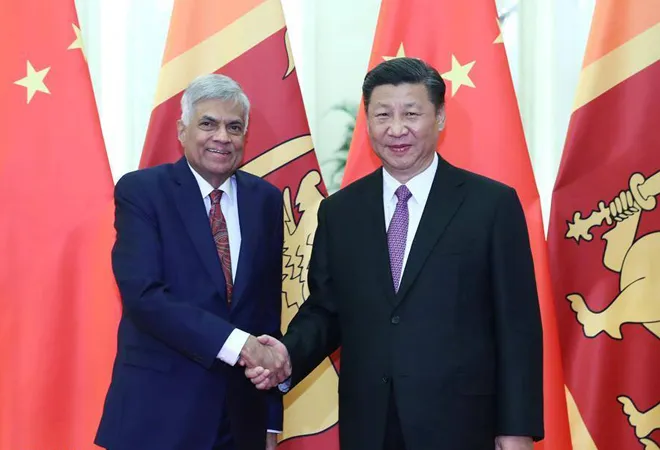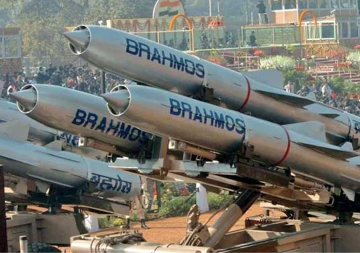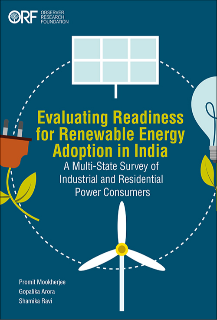While China's illustrious, grand-strategy 'Belt and Road' project seizes the global limelight, India finds itself embroiled in a tough competition with China in neighbouring Sri Lanka. Both states have poured, albeit latterly, massive funds into infrastructural development on the island. Along with commercial engagements, China and India have perceptible strategic goals, complemented with an aim to create a legitimate 'image' for themselves — a concern which has figured excessively in the foreign policy doctrines of the two regional hegemons.
As Sri Lanka configures as a partner in China's herculean efforts to build connectivity and project itself as indeed a global hegemon through the Belt and Road initiative, India has hitherto been equally doubtful of bilateral agreements with either states. Unlike the Mahinda Rajapaksa Government, the current administration in Colombo has, however, mastered greater support from its Indian counterpart. Along with investing in Trincomalee, the strategic port in Sri Lanka, India has boosted its soft power transactions: Prime Minister Narendra Modi's recent visit to Sri Lanka, to celebrate the International Vesak day, bespoke India's renewed interest in a strong partnership with Colombo.
In the face of China's proliferating investments in Sri Lanka, accumulating to over eight billion dollar in infrastructural development in less than five years, India has sought to cultivate a positive sheen in Colombo.
Initially, when Hambantota was offered to India, interest in investing there was modest. With an upsurge in Chinese involvement in Sri Lanka, however, India has wisely paid more attention. It is not surprising that Beijing has insisted upon gaining operational control of failing projects which exacerbates India's concerns about Chinese capture of the island's resources. Even while Sri Lanka doesn't figure as a major asset to India, New Delhi is definitely reluctant to lose it entirely to China.
The modus operandi for China and India, in establishing positive images for themselves, is surprisingly similar. For the American political theorist Robert Jervis, collective and individual perceptions, views of identities and ideologies, and (mis) understandings of the other, as well as social and cultural beliefs, are the key elements of state foreign policy making. India and China have each striven in the regional hemisphere to build a favourable image hinging principally on the offer of stout economic partnership and collaboration with interlocutors. But this process of formation of a self-image has been indelibly marked by the perception by India and China of each other.
Increasingly, Chinese elites have viewed India as a rising power and, therefore, in demand of greater attention. India has persisted in its view of China as a major challenger and has grown widely suspicious of its activities in the neighborhood. By contrast, China has allocated India the status of a ‘middle power', recently shifting its label of India from 'poor', plagued with unsustainable democratic institutions, to a major regional power. Moreover, in line with the shifting perception of India by Western powers, Chinese diplomats have been more or less in agreement that India has an increasing strategic presence in the region and profound stakes in the global realm.
While many scholars emphasise the need for China to take note of India's proliferating goals in the region, older perceptions still find supporters among the Chinese elites. On a brief survey by the
Global Times, it can be observed that China has overtly called for greater engagement with India while affirming the latter's persisting threat perception or 'nervous' behaviour as a prominent hurdle. Such proclamations hint at an awareness of competition from China towards India. This has been revealed in their engagement in Sri Lanka.
With Chinese money flooding the island's infrastructural projects, including several ports, India has made attempts to initiate greater economic partnership with the littoral state. In the current scenario, although most Chinese initiatives are reaping minimal results, Beijing stands reluctant to give up on Sri Lanka. Consequently, India faces a challenge of absolute capture of Sri Lankan land by the Chinese. In the case of Hambantota, even an explicit assurance by Colombo of the port being only used for commercial activity failed to put to rest India's escalating wariness. It has intensified further since a Chinese submarine was docked briefly in Colombo in 2014.
In this context, India needs to drive an independent foreign policy on Sri Lanka, rather than being massively influenced by China's activities in the region. Even as the Belt and Road initiative aims at establishing a huge Chinese presence in each of India's neighbouring states, India can serve its interest better through collaborative endeavours, both with the neighbouring smaller states and the larger powers, such as Japan and Australia, as well as the United States. Hence, instead of treating this domain as a zero-sum game with China, India should be open to opportunities for collaboration with other partners as a plausible alternative in possible arenas. While India can be comparatively relaxed about China's economic endeavours, however, there is an urgency to develop and sustain mechanisms to keep in check China's expansionist ambitions.
The author is a Research Intern at ORF New Delhi.
This commentary originally appeared in The Pioneer.
The views expressed above belong to the author(s). ORF research and analyses now available on Telegram! Click here to access our curated content — blogs, longforms and interviews.




 PREV
PREV

